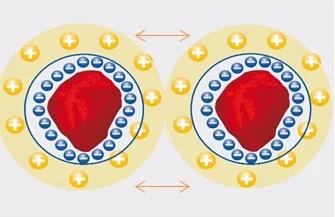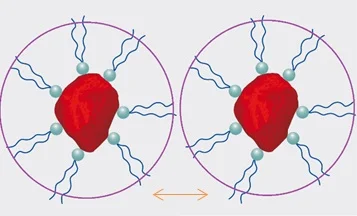 We would like to acknowledge Jochum Beetsma for sharing his technical expertise and validating the page.
We would like to acknowledge Jochum Beetsma for sharing his technical expertise and validating the page.
There could be many reasons you need an alternative dispersant. The following are the most common ones that we see in the industry:
- Shortages of the desired grade.
- Need for a second supply source.
- Desire to switch to a sustainable or cheaper option.
- Current dispersant is not providing good enough performance.
Your approach will be quite different whether you want an alternative for supply purposes or to solve a tech problem.
If you feel stuck or tired of searching on your own to solve your dispersion problem, don't forget we are here to help!
Role of Dispersants and Key Characteristics to Look Out For
Dispersants (also called dispersing agents) are chemical additives that prevent the flocculation and sedimentation of separated solid particles in a liquid. If you are not clear what this means exactly, upgrade first on the dispersion process in paints and inks.
Here are some of the basic things to select an appropriate dispersant.
Stabilizing Power of the Dispersant
An efficient dispersant:
- adsorbs at the surface of the solid particles and
- provides stabilization against flocculation.
If you want to replace a dispersant that works well in your system, opt for an alternative offering a similar stabilization mechanism.
Else, the first question to ask yourself is about the type of stabilization you need for your formulation. Dispersants can stabilize your particles via electrostatic stabilization, steric stabilization, or both.
Electrostatic Stabilization
|
Steric Stabilization
|
|
 Particles repel each other because they all carry an electrostatic charge of the same sign. It is a valid approach for highly polar systems. Particles repel each other because they all carry an electrostatic charge of the same sign. It is a valid approach for highly polar systems.
|
 The dispersant tails occupy the space around the particles, thus preventing particles to meet each other's. It is a secure approach for both solvent and water-based systems.
The dispersant tails occupy the space around the particles, thus preventing particles to meet each other's. It is a secure approach for both solvent and water-based systems.
|
Check this selection guide to ensure you select the right dispersing agent chemistry.
Compatibility of Your Chosen Dispersant
Beyond the stabilization mechanisms, pay attention to the compatibility with other formulation ingredients.
In particular, your dispersant should be compatible with the binder. Else, you may face stability issues as well as poor film performance.
Pigment Type and Role in Dispersant Selection
It is important to choose the right dispersant to achieve a stable system. As pigments vary in their nature, so do dispersants.
Know what type of pigment you have in your system: is it hydrophilic, hydrophobic, inorganic, or organic? Understanding the
chemistry of your pigments as well as its surface composition will help you decide what type of dispersant would be apt.
Our dispersion experts can assist you in finding the best-fitted dispersant for your system.
Common Issues a Wrongly Chosen Dispersant Can Cause
The problems that can appear in your paints due to wrongly chosen pigment dispersant could be many. Here are the most common ones for your reference:
- Low Gloss Levels,
- Issues with the Fineness of the Grind,
- Flocculation,
- Lack of Opacity,
- Low Color Strength, and
- High Cost.
How To Proceed in Practice
To start with troubleshooting such issues you can:
- Look for an alternative dispersant with a similar profile (acidic/basic anchoring groups et cetera).
- Define the optimal dispersant load you need.
- Test your paint or ink properties:
✔Fineness of grind,
✔Viscosity,
✔Color strength,
✔pH, and
✔Stability of these key properties.
Need Help Selecting an Alternative Dispersant?
Followed all the steps and your paint still fails to meet targets?
Get in touch with our team and we will help you analyze what could be wrong in your system. We can help you source the recommended materials.